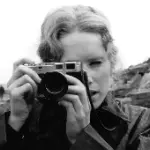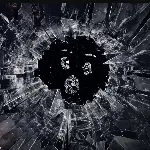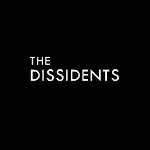The 1960s, when the personal computer was born, is also the beginning of the golden age of science fiction. In this article, I'm going to talk about how the aesthetics of the A Space Odyssey, a science fiction film from the 1960s, influences the design of industrial computers.



Stanley Kubrik Archive / Taschen
In 1968, 2001: A Space Odyssey was released. It is one of the first films to show details of futuristic computer technology and equipment on the big screen.


 At that time, computer developed to the third generation, which was transforming to miniaturization and privatization. Eliot Noyes, IBM's industrial design consultant and director of the U.S. Industrial Design Department, suggested to Kubrick that the computer of the Discovery spacecraft in the film should be the size of a room.
At that time, computer developed to the third generation, which was transforming to miniaturization and privatization. Eliot Noyes, IBM's industrial design consultant and director of the U.S. Industrial Design Department, suggested to Kubrick that the computer of the Discovery spacecraft in the film should be the size of a room.
But Kubrick believed that small smart devices are the future. He put these ideas into practice in the film.
The computers used by Dr. Floyd, Dr. Dave Bowmanand Dr. Frank Pooleare all featured large display screen, right angle, narrow frame, thin and light. Such a design, on the one hand, has the visual consideration of the film, on the other hand, it has the possibility in theory.

Technology shapes imagination, and imagination feeds back technology. Facts have proved that this forward-looking vision has really affected the appearance of a large number of computers.
The next year after 2001: A Space Odyssey, Italian company Olivetti invented a "desktop" computer, small and light enough to keep on a desk as a personal item.
This is the Programma 101, the first personal computer in history.

The advent of Programma 101 is revolutionary, as computers are giant mainframes in closed rooms, manipulated by technicians in white coats.

Olivetti Programma 101
Appearance of Olivetti Programma 101/National Museum of Science and Technology, Milan
Its subversive appearance (it assisted in the Apollo missions to the moon) creates a light, minimalist atmosphere, consistent with the core of 2001: A Space Odyssey, which reflects people's romantic vision of the future.


Scenarios of NASA using Olivetti Programma 101 during the Apollo 11 program/NASA, Associazione Archivio Storico Olivetti
A few years later, the real legacy of 2001: A Space Odyssey Verve Machine emerged.
Commodore PET 2001(1977)
In 1977, the Commodore PET 2001 was introduced as the first all-in-one personal computer. Many of its elements are clearly from 2001: A Space Odyssey.

Commodore PET 2001 /Rama
1. Name
Commodore PET means "personal electronic trading device". It is not just an abbreviation, but a cryptic attribute to HAL in 2001: A Space Odyssey, with three simple capital letters.
As for 2001, it's not a secret tribute. The number itself has no specific meaning, but is to echo 2001: A Space Odyssey.


2. Font
The logo font of PET 2001 is called Microgramma.


The font of Microgramma
In 2001: A Space Odyssey, the font first appeared on the spacecraft's pilot panel, and later on the HAL 9000's computer interface. There is a dark theory by fans here: it implies that the ship was controlled by HAL in the first place.



The Microgramma font on Discovery's buttons and screen
Microgramma is created by Italian designers Aldo Novarese and Alessandro Butti. It was very popular in the 1970s.
Aldo Novarese then developed the typeface Eurostile in 1962, which is basically a variant of Microgramma. There is no obvious difference between the two-both are bold, simple, smooth and light sans-serif fonts.


The pay interface for the video phone and the zero-gravity toilet instructions for the Kravis flight, using the Eurostile font
Later, this kind of font almost became the standard of electronic brands, science fiction movies and games, such as Star Trek, Casio, Toshiba.



Old posters of Star Trek, Casio watches and Toshiba appliances, pay attention to the logo font
Perhaps until the advent of EVA, Microgramma fonts symbolized science and technology, standing for the precision, progress and optimism of the mid-20th century.
*The article "Doomsday Percussion: The World of Evangelion" points out that EVA uses Futura, Helvetica and Eurostile, these highly modernist fonts, for the exact opposite purpose of depicting a failed world in which modernism has reached its limits.

"RESCUE NERV" in Eurostile in EVA
It is said that Kubrick's favorite fonts are not Microgramma, but Futura, Helvetica and Univers, which are "clean and elegant". However, Microgramma's philosophy embodies his definition of "the future".
This brings us to the following topic: color and shape.
Continue here……
https://www.peliplat.com/en/article/10001802























































Share your thoughts!
Be the first to start the conversation.